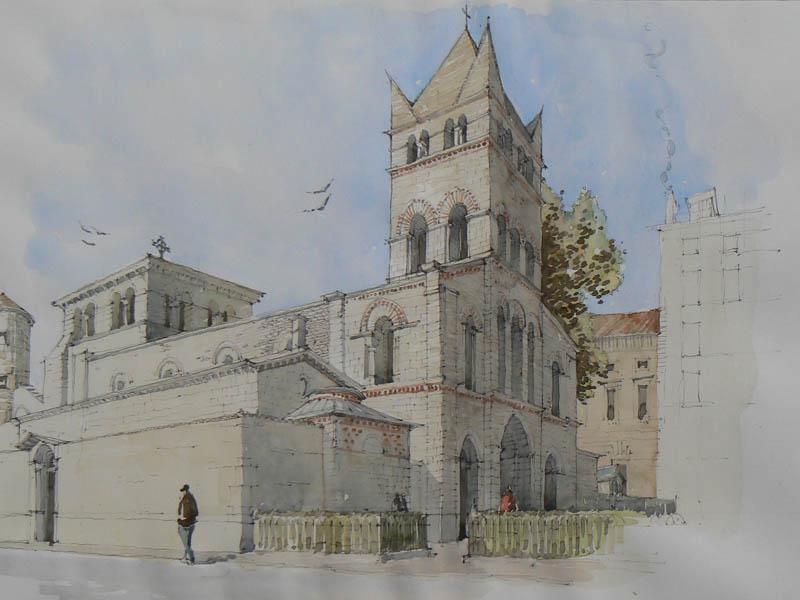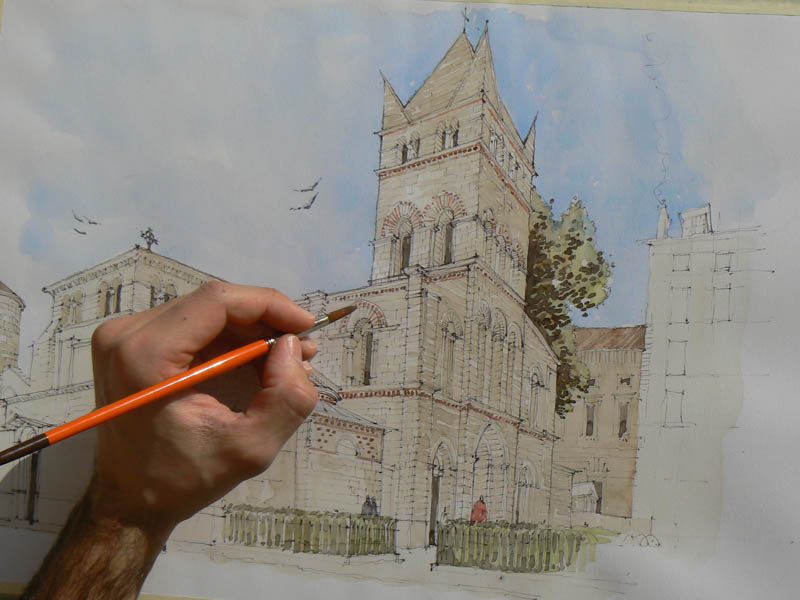
Difficulty: Experienced / Time of execution: 3 hours
Artist : Jérémy Soheylian
Architectural drawing is rigorous observation work. you need to be very attentive, and especially patient! Of course, you will not be able to transfer everything you see and admire to paper. From your sketch to adding color with watercolors, here's all the art and know-how you need to show architecture at its best.
Material
- Pencils and paintbrushes: 1 fine tip indelible black ink ball-point pen, 1 wash brush
- Colors: 8 watercolors in tubes
Ultramarine blue, ocher yellow, red ocher, Payne's gray, cerulean blue, olive green, cadmium red
- Accessories: 1 ruler, 1 drawing board, 1 roll masking tape, 1 jar water, 1 watercolor palette








